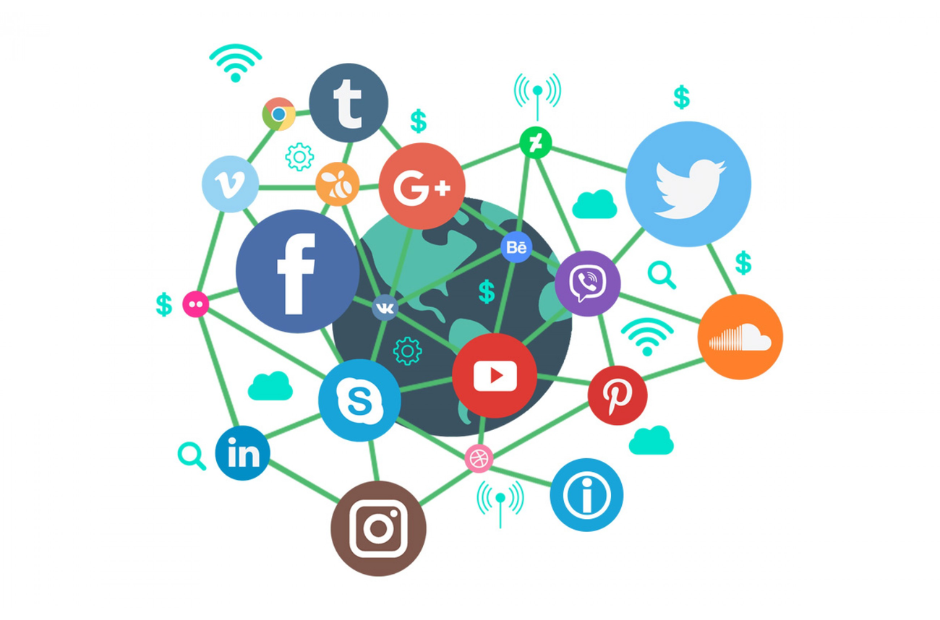In the contemporary digital world, social media platforms have become essential marketing tools. Leveraging these platforms can significantly enhance your brand identity and broaden your audience reach.
We’ll delve into the various ways you can use social media to reinforce your brand, tailor content to various platforms and maintain a consistent brand voice. We will explain how to use social media feedback to refine your brand identity.
Unleashing the power of platforms

Social media platforms are diverse, each with unique features that appeal to distinct user demographics and foster varying types of engagement. It is essential to recognize these attributes to maximize the impact of your branding efforts.
- Facebook. With over 2.8 billion monthly active users in 2021, Facebook is one of the most widely used social platforms. Its broad demographic base makes it a versatile tool for brand promotion. Its extensive ad targeting options allow you to reach very specific groups. Besides, its features like Facebook Stories, Live, and Groups offer various ways to connect with audiences.
- Instagram. Instagram has a user base of over 1 billion people, with a demographic skewing towards the younger generation (ages 18-34). It is a visually oriented platform, making it perfect for brands with strong visual content. The Instagram Stories feature, in particular, allows for creative storytelling that can significantly enhance a brand’s identity.
- LinkedIn. As a professional network, LinkedIn is a potent tool for B2B companies. The platform has more than 774 million users from more than 200 countries. It offers a global reach for brands looking to establish thought leadership and professional credibility.
Additional examples
- Twitter. With its real-time feed, Twitter is excellent for immediate engagement and conversation with your audience. As of 2021, Twitter boasts approximately 330 million monthly active users. It is a useful platform for sharing news updates, promoting thought leadership, and connecting directly with customers through conversational posts.
- Pinterest. This platform is particularly beneficial for brands offering tangible products, allowing users to discover and save ideas. With over 400 million monthly active users, Pinterest is used for planning, providing brands an opportunity to connect with users at the consideration stage of the purchase funnel.
- TikTok. This short-form video platform is one of the fastest-growing social media networks, especially popular among Generation Z. TikTok’s For You algorithm makes it possible for brands to go viral and reach a large audience without a massive following.
By tailoring your content and engagement strategy to each platform, while maintaining consistency in your brand voice, you can maximize your visibility and impact across diverse audiences.
Maintaining a unified brand voice
Maintaining a consistent brand voice across all platforms strengthens brand recognition. This includes visual elements like logos and color schemes, as well as tone of voice and messaging. Coca-Cola effectively uses a consistent logo and color scheme across all platforms, and its messaging consistently promotes positivity and inclusivity.
Interacting with your audience
Engaging with your audience is crucial for building brand loyalty and understanding customer needs. This includes responding to comments, hosting Q&A sessions, and sharing user-generated content. Starbucks, for instance, shares photos from customers who tag their brand. It fosters a sense of community and increasing brand loyalty.

Using social media feedback
The interactive nature of social media presents brands with a valuable opportunity to engage directly with their audience and gain insights into their perception of your brand identity.
Here are some of the ways to use social media as feedback:
- Comments, likes, shares, and retweets. These public feedback forms give brands an instant snapshot of what resonates with their audience. Increased likes or shares can indicate that content aligns well with your audience’s expectations or perceptions of your brand. Comments can offer more nuanced feedback.
- Direct messages and tags. If consumers contact or mention a brand in their posts, it often indicates deeper engagement. These interactions can provide specific insights into your customers’ experiences and relationships with your brand.
- Reviews and ratings: On platforms like Facebook, consumers can leave reviews and ratings for businesses. These can serve as testimonials for prospective customers. It can give you insight into what aspects of your product or service are resonating with your customer base.
- Social listening tools: Tools like Hootsuite, Sprout Social, or Mention can help track mentions of your brand across social media and the internet more broadly, including on platforms where you may not have an active presence.
- Sentiment analysis: This involves using AI technologies to assess the sentiments expressed towards your brand on social media. Sentiment analysis can objectively measure your brand’s perception and help identify trends over time.
By actively monitoring and responding to this feedback, you can make real-time adjustments to your brand strategy. That way you can improve the effectiveness of your social media branding efforts.
You can also:
- identify potential crises before they escalate
- manage your online reputation effectively
- use the insights gained to inform broader business strategies.
Power of social media advertising
Don’t underestimate the power of social media advertising. Platforms provide precise targeting options, allowing your brand to reach potential customers based on their interests, behaviors, and demographics. Facebook’s Lookalike Audiences, e.g., can help you reach users similar to your existing customers. Therefore it helps expanding your reach to potential customers likely to be interested in your brand.
Conclusion
In the digital age, a robust social media presence strengthens brand identity. You can enhance your brand’s presence by grasping platform nuances, maintaining a consistent voice, engaging your audience, and utilizing social media ads. If you want to learn more about boosting brand identity, check out androidcompare.com for more articles that might help.
If this article helped you in leveraging social media to boost your brand identity, you might want to check this blog – Leveraging billboards for effective brand messaging. It will provide extra information about creating solid brand messaging by leveraging billboards. For more knowledge regarding ways to create brand identity, check the androidcompare.com website.






